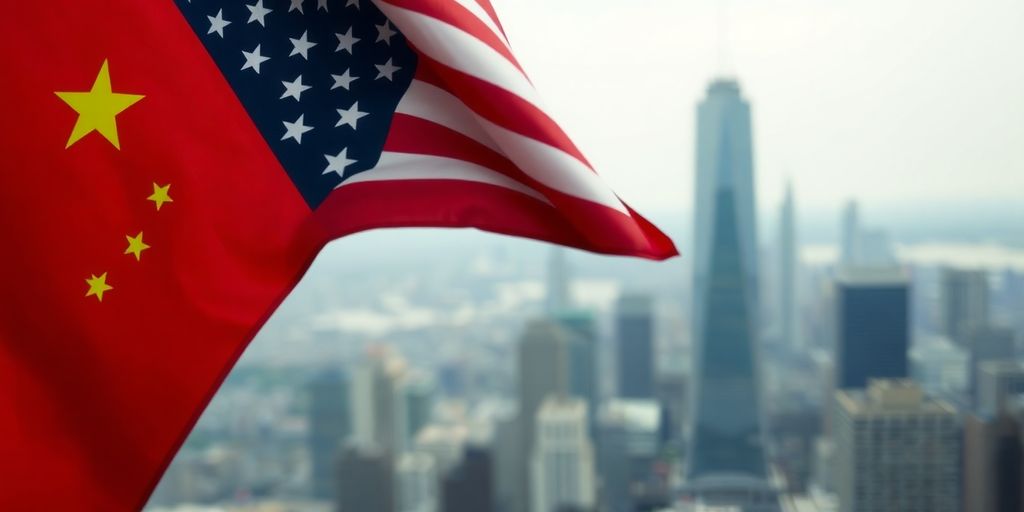Business
U.S.-China Tariff Negotiations Resume Amid Economic Uncertainty

Sensitive discussions between U.S. and Chinese officials regarding tariffs that threaten global economic stability have resumed in Geneva. Following a lengthy negotiation session, both sides are hopeful for a resolution that could ease trade tensions and stabilize markets.
Key Takeaways
- U.S. and China are engaged in high-stakes tariff negotiations in Geneva.
- The talks follow a significant increase in tariffs, with U.S. tariffs on China reaching 145%.
- Both sides are under pressure to find common ground to avoid further economic disruption.
Background of the Tariff Dispute
The ongoing trade conflict between the United States and China has escalated significantly over the past few years. The U.S. has accused China of employing unfair trade practices, including:
- Forced Technology Transfers: Requiring foreign companies to share technology to access the Chinese market.
- Subsidization of Domestic Firms: Using government funds to support local companies, giving them an unfair advantage.
- Intellectual Property Theft: Allegations of outright theft of sensitive technologies.
In January 2020, the two nations reached a Phase One agreement, which aimed to ease tensions but left many critical issues unresolved. The COVID-19 pandemic further complicated the situation, disrupting trade and leading to unmet commitments from China to purchase U.S. goods.
Current Negotiations
The latest round of talks, which took place at the historic Villa Saladin in Geneva, lasted over ten hours. Treasury Secretary Scott Bessent and Chinese Vice Premier He Lifeng led the discussions, but no immediate breakthroughs were reported. An official involved in the talks indicated that while progress seemed limited, there remains hope for a mutual agreement to de-escalate tariffs.
Economic Implications
The tariffs currently imposed by both countries have significant implications for global trade:
- U.S. Tariffs on China: 145% on various goods, severely impacting imports.
- Chinese Retaliation: 125% tariffs on American products, affecting exports.
These high tariffs have led to a virtual boycott of each other’s products, disrupting a trade relationship that exceeded $660 billion last year. The economic fallout from these tariffs has raised concerns among businesses and investors alike, prompting calls for a resolution.
Future Outlook
Despite the challenges, there is cautious optimism that both nations can agree to reduce tariffs. Experts suggest that even a small reduction could signal a positive shift in relations. Sun Yun, a director at the Stimson Center, emphasized the importance of tangible results rather than mere rhetoric.
Broader Trade Context
The U.S. trade deficit with China reached $263 billion last year, further fueling tensions. President Trump has been vocal about his dissatisfaction with this deficit and has used tariffs as a primary tool to address it. Additionally, the U.S. has imposed tariffs on imports from various countries, complicating the global trade landscape.
Conclusion
As the U.S. and China continue their negotiations, the world watches closely. The outcome of these talks could have far-reaching effects on global markets and the economies of both nations. With the stakes so high, both sides are under pressure to find a resolution that can restore stability and foster a more cooperative trade environment.
Sources
-

 Press Release4 days ago
Press Release4 days agoClinical Trials Market Set for Robust Growth, Driven by Drug Development Surge and Digital Innovation
-

 Press Release7 days ago
Press Release7 days agoBellarium ($BEL) Price Prediction: Could It Hit $5 by 2026?
-

 Business6 days ago
Business6 days agoHow Managed IT Solutions Help Small Teams Compete at Enterprise Scale
-

 Press Release5 days ago
Press Release5 days agoFill-Finish Pharmaceutical Contract Manufacturing Market Expected to Flourish Amid Biopharmaceutical Boom and Global Outsourcing Trend by 2035
-

 Press Release5 days ago
Press Release5 days agoIndustrial Boiler Market Expected to Surpass USD 24.4 Billion by 2035 Amid Growing Demand for Energy Efficiency and Industrialization
-

 Press Release5 days ago
Press Release5 days agoGreen Bio Chemicals Market Poised for Sustainable Growth amidst Global Shift to Eco-Friendly Alternatives by 2035
-

 Press Release5 days ago
Press Release5 days agoPreventive Vaccines Market to Witness Strong Growth by 2035
-

 Press Release5 days ago
Press Release5 days agoPet Food Nutraceutical Market Set for Robust Expansion Amid Rising Demand for Pet Wellness by 2035






























